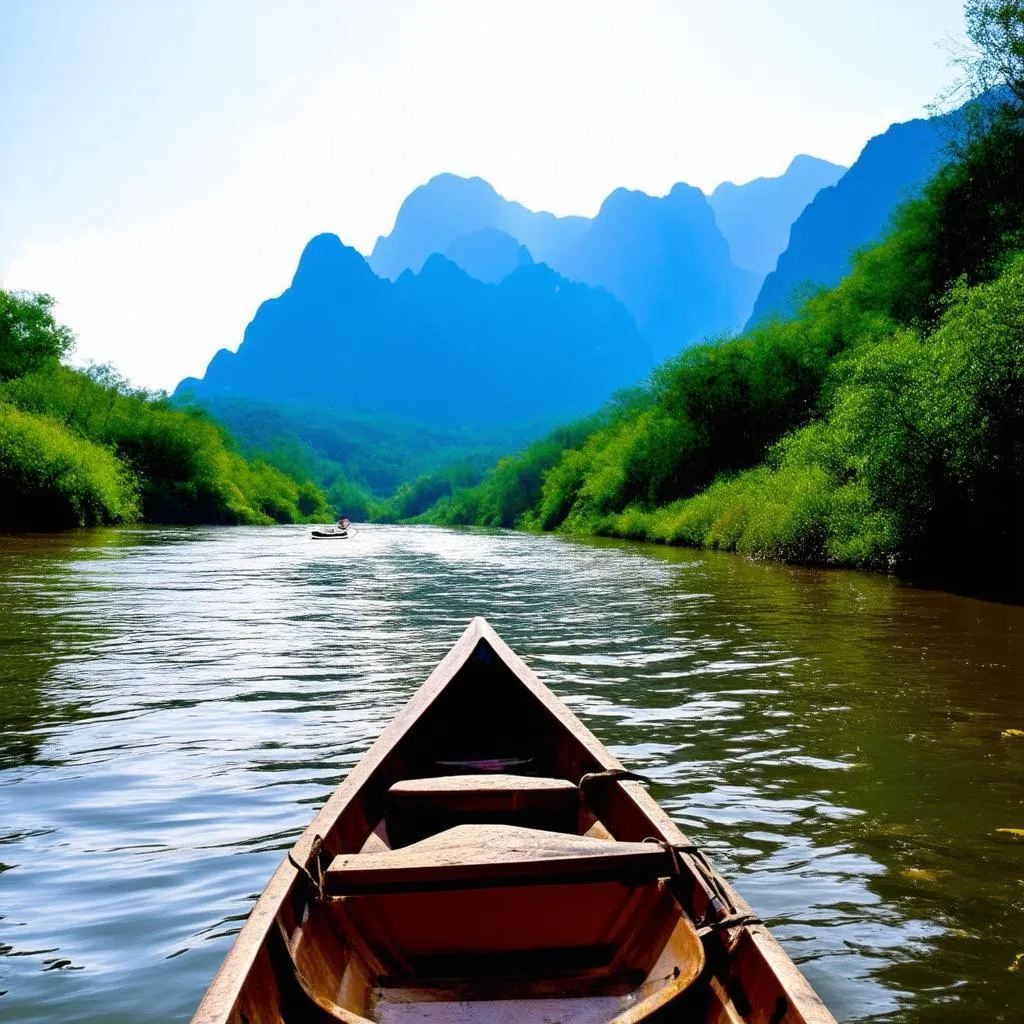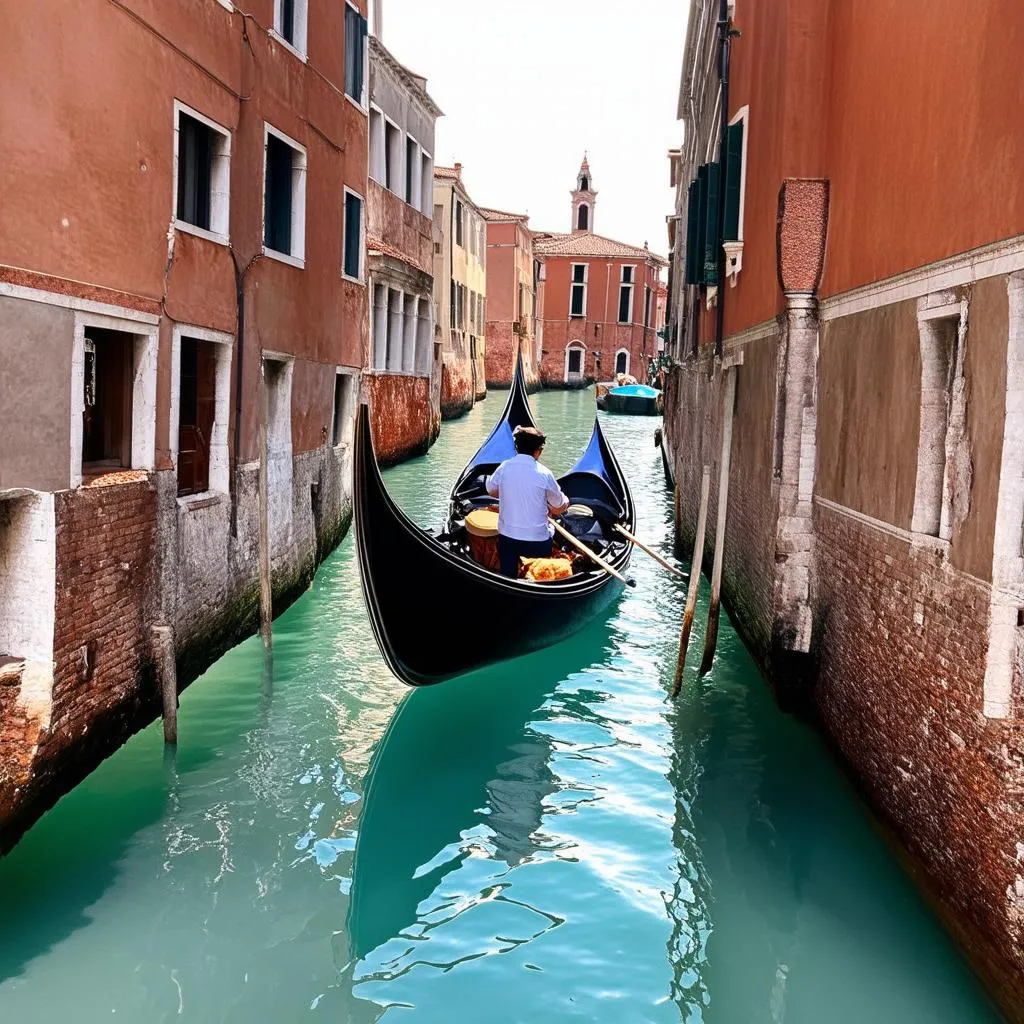Have you ever watched a leaf drift down a stream, seemingly at odds with the current? That simple observation encapsulates the essence of today’s exploration: a boat traveling upstream. It’s a scenario ripe with intrigue, echoing the challenges and triumphs we encounter on life’s journey.
Imagine this: you’re cruising along the serene backwaters of Kerala, India, aboard a traditional houseboat. The sun warms your face, a gentle breeze whispers through the palm trees, and the only sound disturbing the tranquility is the soft lapping of water against the hull. After an hour of this idyllic journey, you realize you’re much further from your destination than expected. What happened? The answer, my friend, lies in understanding the forces at play – the boat’s speed, the current’s strength, and the intriguing dance between them.
Deciphering the Dynamics of Upstream Travel
Traveling upstream isn’t just about pointing your boat in the opposite direction of the current. It’s about factoring in the invisible force working against you.
- Upstream: Moving against the natural flow of the water, requiring more effort and time to cover the same distance.
- Downstream: Traveling with the flow of water, allowing for faster and often more effortless movement.
The Impact of Current on Boat Speed
When a boat travels upstream, its effective speed is reduced by the speed of the current. Think of it as a constant resistance, pushing against the boat’s progress. Conversely, when traveling downstream, the current assists the boat, increasing its effective speed.
Example:
Imagine a boat with a speed of 10 miles per hour in still water. If the river current flows at 2 miles per hour:
- Upstream Speed: 10 mph (boat) – 2 mph (current) = 8 mph
- Downstream Speed: 10 mph (boat) + 2 mph (current) = 12 mph
Calculating Distance Traveled
Now, let’s consider the initial scenario: a boat travels upstream for one hour. To determine the distance covered, we need to know the boat’s speed in still water and the speed of the current.
Formula:
Distance = (Boat Speed – Current Speed) x Time
Example:
Using our previous example, if the boat travels upstream for one hour:
Distance = (10 mph – 2 mph) x 1 hour = 8 miles
Beyond the Numbers: A Journey of Perseverance
The concept of upstream travel resonates deeply with our own life experiences. Just as a boat must navigate opposing currents, we often encounter challenges and obstacles that test our resolve and determination. It’s in these moments, when we push against the tide, that we discover our true strength and resilience.
 Serene River Journey
Serene River Journey
Planning Your Voyage: Tips for Upstream Travel
Whether you’re navigating the mighty Mekong River in Southeast Asia or exploring the serene canals of Venice, Italy, consider these tips for a successful upstream journey:
- Research the Current: Before setting off, gather information about the waterway’s current speed and patterns. Local guides or experienced boaters can provide valuable insights.
- Factor in Extra Time: Account for the reduced speed when planning your itinerary. It’s always better to arrive early than to be rushed or miss out on experiences.
- Embrace the Challenge: Traveling upstream may require more effort, but it often leads to hidden gems and unique perspectives that downstream travelers miss.
FAQs About Upstream Travel
Q: Does wind affect a boat’s speed upstream?
A: Absolutely! A headwind (blowing against the direction of travel) can significantly reduce a boat’s speed upstream, while a tailwind can assist its progress.
Q: Is it always more difficult to travel upstream?
A: While upstream travel generally requires more effort, factors like strong currents, wind conditions, and even the type of boat can influence the difficulty level.
Finding Your Flow with travelcar.edu.vn
At travelcar.edu.vn, we believe that every journey, whether upstream or downstream, is an opportunity for discovery and growth. Let us be your guide as you navigate the world’s waterways and unlock the secrets they hold. From the majestic Mekong River to the enchanting canals of Venice, we’ll help you plan your perfect aquatic adventure.
 Venice Canal Dream
Venice Canal Dream
Conclusion: Embracing the Journey
Just as a boat traveling upstream teaches us about perseverance and the power of nature, every journey we embark upon offers valuable lessons and unforgettable experiences. Embrace the challenges, celebrate the triumphs, and never stop exploring the world around you.
What are your thoughts on the symbolism of upstream travel? Share your reflections and travel stories in the comments below. And don’t forget to explore travelcar.edu.vn for more travel inspiration and tips!